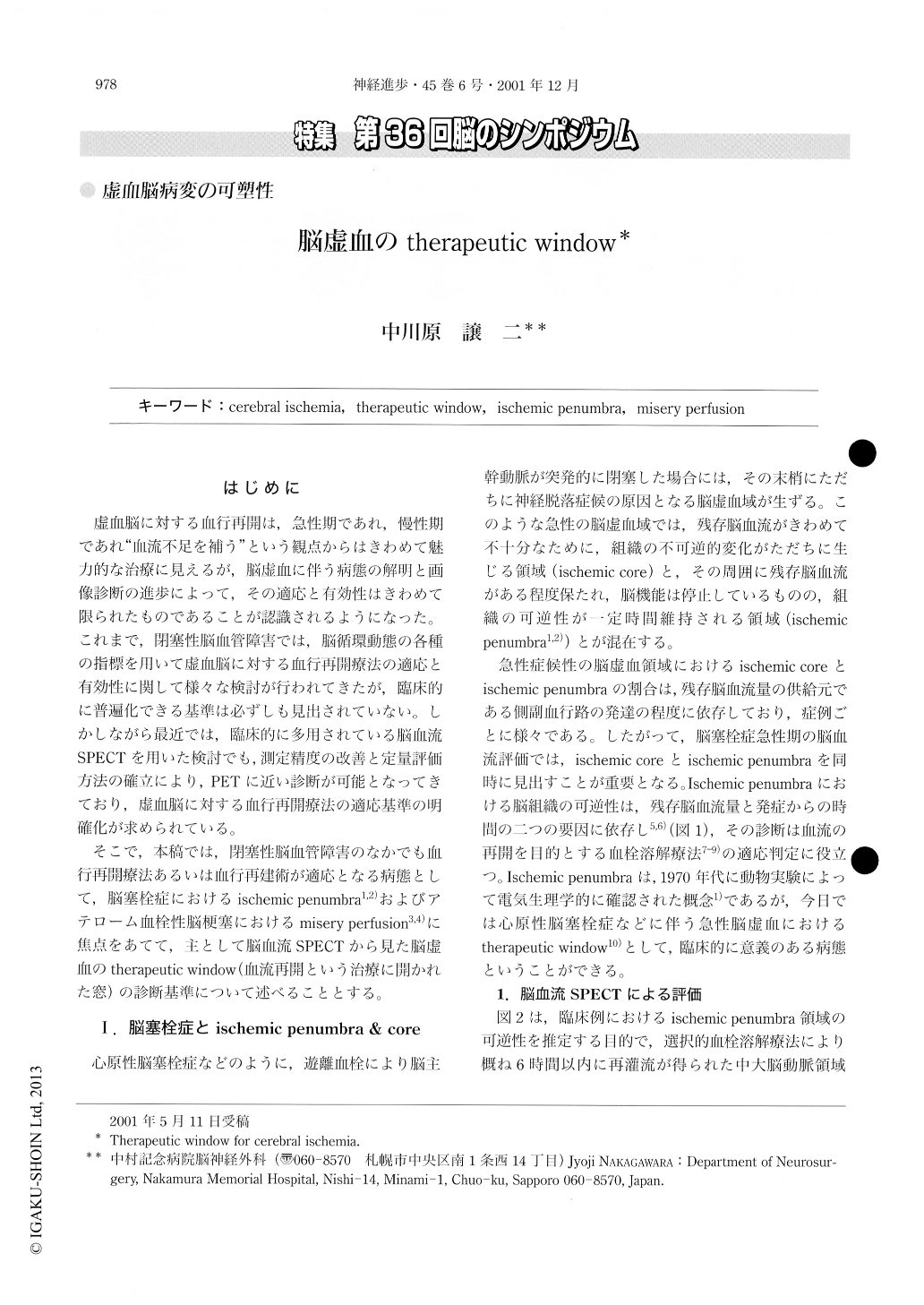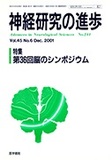Japanese
English
- 有料閲覧
- Abstract 文献概要
- 1ページ目 Look Inside
はじめに
虚血脳に対する血行再開は,急性期であれ,慢性期であれ“血流不足を補う”という観点からはきわめて魅方的な治療に見えるが,脳虚血に伴う病態の解明と画像診断の進歩によって,その適応と有効性はきわめて限られたものであることが認識されるようになった。これまで,閉塞性脳血管障害では,脳循環動態の各種の指標を用いて虚血脳に対する血行再開療法の適応と有効性に関して様々な検討が行われてきたが,臨床的に普遍化できる基準は必ずしも見出されていない。しかしながら最近では,臨床的に多用されている脳血流SPECTを用いた検討でも,測定精度の改善と定量評価方法の確立により,PETに近い診断が可能となってきており,虚血脳に対する血行再開療法の適応基準の明確化が求められている。
そこで,本稿では,閉塞性脳血管障害のなかでも血行再開療法あるいは血行再建術が適応となる病態として,脳塞栓症におけるischemic penumbra1,2)およびアテローム血栓性脳梗塞におけるmisery perfusion3,4)に焦点をあてて,立として脳血流SPECTから見た脳虚血のtherapeutic window(血流再開という治療に開かれた窓)の診断基準について述べることとする。
In a case with embolic occlusion of cerebral artery, residual cerebral blood flow (CBF) in symptomatic ischemic region is distributed heterogeneously and cerebral infarction is developed gradually from ischemic core to penum-bra. Ischemic core is defined as a region with irreversible tissue damage due to fairly poor collateral circulation, and ischemic penumbra is defined as a region with preservation of tissue reversibility in a certain time. Reversibil-ity of ischemic penumbra is also depending on both residual CBF and time from stroke onset, and the existence of ischemic penumbra is essential for thrombolytic therapy.

Copyright © 2001, Igaku-Shoin Ltd. All rights reserved.


